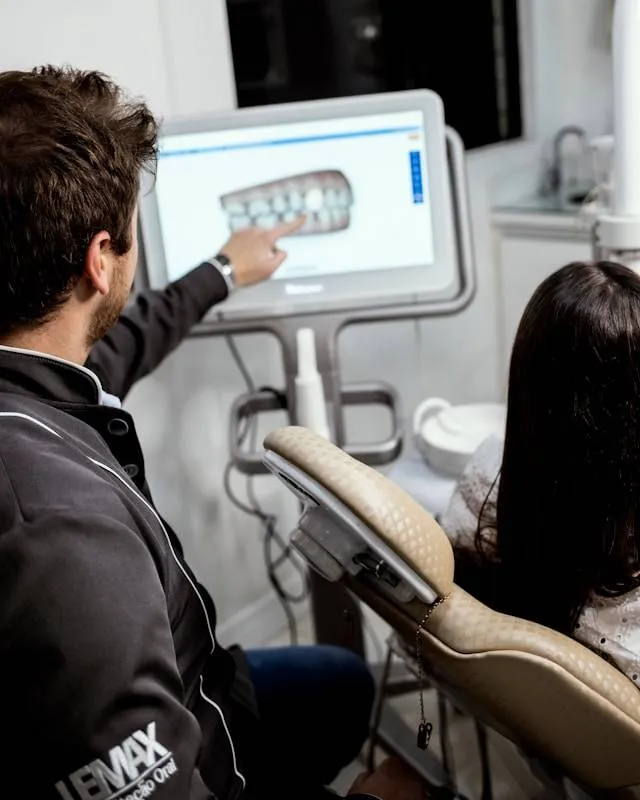1. What is a gummy smile?
Gummy smile is a condition in which when smiling, the gums are exposed too much, usually more than 3mm. This can affect the aesthetics of the smile and reduce the confidence of the person with a gummy smile.
There are different degrees of gummy smile:
- Mild: 2-4mm of gum exposed when smiling
- Average: 4-6mm of gum exposed when smiling
- Severe: More than 6mm of gum exposed when smiling
2. Causes of gummy smile
There are many causes of gummy smile:
a. Overdeveloped upper jaw: When the upper jaw grows excessively, it pushes the gums out, exposing more gums when smiling.
b. Overactive levator labii superioris muscle: This muscle pulls the lip up too high, causing the gums to show too much when smiling.
c. Upper lip is too short: Short lips do not cover the gums enough, leading to gum exposure when smiling.
d. Congenital thick gums: Gums that are too thick make the gums more exposed than normal.
e. Teeth that are too short in height: The disproportion between the height of the teeth and the gums causes the gums to be exposed when smiling.
f. Protruding teeth or deep bite: Bite problems can lead to a gummy smile.
3. Harmful effects of gummy smile
Gummy smile not only affects aesthetics but can also cause many other problems:
a. Psychology: Many people feel self-conscious and lack confidence when communicating due to gummy smiles.
b. Oral hygiene: People with gummy smiles may have difficulty cleaning their teeth, leading to an increased risk of gingivitis and tooth decay.
c. Difficulty speaking: In some cases, a gummy smile can affect the ability to speak.
4. Treatment methods for gummy smile
a. Gingivectomy:
Gingivectomy is a common procedure to treat a gummy smile. The surgeon will remove excess gum tissue to expose more of the teeth, helping to balance the ratio between teeth and gums.
But it should be noted that gingivectomy can reduce the amount of gum exposed, but if the cause is the jawbone or the lip elevator muscle, this method does not provide long-term results. On the other hand, studies show that gingivectomy is only suitable for cases of very thick gums or abnormally short teeth.
b. Botox injection:
Botox injections are a non-surgical method that helps weaken the muscles that lift the upper lip, thereby reducing the appearance of gummy smile. This method has a temporary effect, lasting from 3-6 months.
c. Orthodontics (braces):
Braces can help improve your bite and thus balance your face, especially if the cause is related to dental problems. But orthodontics is only effective in some cases of gummy smiles related to protruding teeth or a bad bite.
d. Orthognathic surgery:
In cases of gummy smile due to overgrowth of the upper jaw, orthognathic surgery can be an effective solution.
e. Upper lip adjustment:
Surgical fixation or adjustment of the lip lift muscle can help limit the condition of the lip being pulled too high when smiling.
f. Laser therapy:
This method uses lasers to stimulate the regeneration of gum tissue and reduce inflammation.
5. Choose the right treatment
Choosing a gummy smile treatment method depends on many factors:
a. Causes of gummy smile
b. Severity of the condition
c. General health status of the patient
d. Patient wishes and expectations
e. Treatment costs
The dentist will examine, take X-rays and make a thorough assessment to determine the most appropriate treatment for each specific case.
6. Treatment process for gummy smile
The gummy smile treatment process usually includes the following steps:
a. Examination and diagnosis:
The doctor will check your oral health, take X-rays and assess the level of gummy smile.
b. Treatment planning:
Based on the diagnostic results, the doctor will recommend the most appropriate treatment.
c. Treatment implementation:
Depending on the method chosen, the treatment can last from a few hours (like Botox) to several months (like braces).
d. Monitoring and adjustment:
After treatment, patients need to come back for regular check-ups so that the doctor can monitor the results and make adjustments if necessary.
7. Post-treatment care
After gummy smile treatment, patients need to follow some notes to ensure the best results:
a. Eat soft foods such as porridge and soup in the first days after treatment.
b. Eat lots of green vegetables to provide vitamin C and fiber, promoting the healing process.
c. Practice proper oral hygiene, using a soft toothbrush and mouthwash as directed by your dentist.
d. Avoid strenuous activities and limit loud laughter during the first period after treatment.
e. Follow the follow-up schedule so your doctor can monitor your recovery.
8. Preventing gummy smile
Although not all cases of gummy smiles can be prevented, there are some measures that can help reduce the risk:
a. Maintain good oral hygiene to prevent gingivitis and other periodontal problems.
b. Avoid bad habits such as thumb sucking, tongue thrusting, and prolonged pacifier use in young children.
c. Early treatment of bite problems and crooked teeth.
d. Do lip muscle exercises to improve muscle control when smiling.
9. Frequently asked questions about gummy smile treatment
a. Is gummy smile treatment painful?
The amount of pain depends on the treatment. Procedures like Botox injections are generally painless, while surgery can cause mild discomfort for the first few days after treatment.
b. Are the results of gummy smile treatment permanent?
This depends on the treatment and the cause of the problem. Botox injections need to be repeated periodically and are only temporary (3-6 months) and are not suitable for all patients.
c. Can gummy smile be treated without surgery?
Yes, some mild cases can be treated with non-surgical methods such as botox injections (which are only temporary) or braces.
d. How long does it take to see results after gummy smile treatment?
This time depends on the treatment. Botox injections can show results in a few days, while braces can take anywhere from several months to several years.
e. Is there an age limit for gummy smile treatment?
There is no specific age limit, but doctors often recommend waiting until jaw and tooth growth is complete (usually after age 18) for best results.
Conclude:
Treating a gummy smile is a process that requires patience and cooperation between the patient and the doctor. With the development of modern dental technology, there are many effective and safe treatment methods. Choosing the right method and following the doctor's instructions will help you have a confident and radiant smile. Remember, every smile is beautiful in its own way, and the most important thing is that you feel comfortable and confident with yourself.





